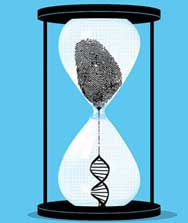Gender Based Violence
The United Nations has designated gender-based violence against women as a
worldwide health and development concern, and numerous laws, campaigns, and
initiatives have been put in place to combat it. Violence against women has been
committed all throughout the world. The novel conceptualizations, methodological
concerns, and particular research findings that can support such efforts are
highlighted in this article.
It also identifies cultural factors, such as connections between sex and violence through media images that may increase women's risk for violence, and profiles a variety of detrimental physical, mental, and behavioural health outcomes associated with victimisation, such as unintended pregnancy and abortion. Recent research findings that document relationships between gender, power, sexuality, and intimate violence cross-nationally are also discussed.
Introduction
In the Middle East and Asia, women are murdered in the name of honour. In West Africa, girls are subjected to genital mutilation out of respect for tradition. Western European migrant and refugee women face violence because they reject the social norms of their host society. Due to the perpetrators' conviction that having sex with virgins will heal them of their illness, young girls in southern Africa are sexually assaulted and infected with HIV/AIDS.
However, the meaning of violent acts differs significantly depending on the temporal and cultural context for men and women according to gender. For instance, according on the gender of the perpetrator, the intensity of a particular physical act will be assessed differently. In order to fully comprehend gender-based violence, it is necessary to look beyond the sex variations in rates and ratings of particular actions and consider how different features of gender influence the predictors, dynamics, and effects of violence for both men and women.
New theories that explain how different aspects of gender mediate and moderate the effects of social, psychological, and biological factors over the course of a person's life and influence the risk, experience, and outcomes of interpersonal violence between women and men are necessary to reduce gender-based violence. However, one thing that can currently be inferred is that gender-based violence has a variety of predictors, meanings, and results that vary for men and women, both as offenders and as victims.
Ironically, it wasn't until the late 1980s that the US surgeon general recognised interpersonal violence as the top public health concern for adult women (Koop, 1985)[2]. Given its prevalence and serious physiological, social, and economic repercussions, male violence against women is remarkably invisible.
Here, we concentrate on gender-based intimate partner violence (IPV), [4]which includes acts of physical, sexual, and emotional abuse committed by an intimate partner. Examples include physical assault, verbal abuse, forced sexual contact, and other types of sexual coercion, as well as a range of controlling behaviours meant to limit freedom of action (such as seclusion from family and friends).
Violence against women, rights, and social control
Researchers are starting to look into how IPV serves as a type of social control that keeps women's social and political statuses in the background and reflects ideas of male entitlement and privilege. Abusers are more likely to be men who view being a man as having the power to dominate and control others.
There is a cross-cultural correlation between male intimate partner violence and a number of socially controlling practises[5]. Intimate partner violence and controlling behaviours of husbands were strongly associated, according to Kishor and Johnson (2004).
These controlling behaviours included:
Across the various cultures examined, the probability of violence directly rose with the amount of controlling husband behaviours.
Gender, power, and sexuality Relationships
Social systems frequently mirror unequal gender relations that support the continued justification of masculine aggression. relationships between wives and husbands, female patients and male doctors, and female employees and male employers.[6] Male coaches, female athletes, and male doctors, for instance, all share institutional and ideological characteristics that place women in subordinate roles to men.
The average teenager watches three hours of television per day, listens to 1.5 hours of music, watches less than one hour of movies, reads for three-quarters of an hour, and uses the computer for one and a half hours.
Lack of coordination between family and criminal courts, prosecutor or police resistance, and the judiciary's unwillingness or incapacity to implement the law are all typical problems, often brought on by a lack of resources or specialised knowledge. The training of experts, the restructuring of police departments or judicial systems, and the provision of a more thorough and encouraging response to survivors have all been initiatives to enhance institutional responses to gender-based violence.
Building collaborations between the justice system and other sectors and bolstering and modernising the judicial system as a whole tend to be the most successful. Most nations lack proper support services for survivors, which are primarily provided by NGOs.
Even though there is mounting evidence that sexual harassment and other forms of gender-based violence are pervasive in educational settings, the education sector has fallen significantly behind the health sector in formulating a policy response to violence against women.
Conclusion
Women and men experience gender-based violence differently; it is a complicated, diverse problem. In order to understand and analyse the aspects that mediate and moderate the relation of gender to the experience of interpersonal violence, advanced approaches in theory and method are required. These acts of violence come in a variety of shapes, are supported by media images, and are based on patriarchal social norms and gender roles.
Such violence has profound and lasting psychological, social, and behavioural impacts on men, women, families, and society. Gender-based violence will need to be understood, predicted, and prevented, and this will need a complex and all-encompassing strategy that responds to cultural differences and intervenes at the individual, interpersonal, and structural levels.
It also identifies cultural factors, such as connections between sex and violence through media images that may increase women's risk for violence, and profiles a variety of detrimental physical, mental, and behavioural health outcomes associated with victimisation, such as unintended pregnancy and abortion. Recent research findings that document relationships between gender, power, sexuality, and intimate violence cross-nationally are also discussed.
Introduction
In the Middle East and Asia, women are murdered in the name of honour. In West Africa, girls are subjected to genital mutilation out of respect for tradition. Western European migrant and refugee women face violence because they reject the social norms of their host society. Due to the perpetrators' conviction that having sex with virgins will heal them of their illness, young girls in southern Africa are sexually assaulted and infected with HIV/AIDS.
However, the meaning of violent acts differs significantly depending on the temporal and cultural context for men and women according to gender. For instance, according on the gender of the perpetrator, the intensity of a particular physical act will be assessed differently. In order to fully comprehend gender-based violence, it is necessary to look beyond the sex variations in rates and ratings of particular actions and consider how different features of gender influence the predictors, dynamics, and effects of violence for both men and women.
New theories that explain how different aspects of gender mediate and moderate the effects of social, psychological, and biological factors over the course of a person's life and influence the risk, experience, and outcomes of interpersonal violence between women and men are necessary to reduce gender-based violence. However, one thing that can currently be inferred is that gender-based violence has a variety of predictors, meanings, and results that vary for men and women, both as offenders and as victims.
Violence against women, based on Gender
Any act that causes or is likely to cause physical, sexual, or psychological pain or suffering to women, including threats of such acts, coercion, or arbitrary deprivation of liberty, whether occurring in public or private life, is considered gender-based violence against women. This definition, which resulted from the 1995 United Nations Conference[1] on Women in Beijing, captures a global understanding of the dynamics of gender-based violence and includes intimate relationship violence, stalking, rape, and child sexual abuse.Accessing the problem of gender-based violence
By giving various levels of legitimacy to male aggression against women, gender has differentially influenced the meaning of violent acts committed by men and women. The victims have gained invisibility along with validity. Marriage as a social institution has come under close scrutiny since it gives males the right to abuse and rape their wives and gives them the appearance of legitimacy in doing so.Ironically, it wasn't until the late 1980s that the US surgeon general recognised interpersonal violence as the top public health concern for adult women (Koop, 1985)[2]. Given its prevalence and serious physiological, social, and economic repercussions, male violence against women is remarkably invisible.
brand-new concepts
Researchers now are learning novel approaches to conceptualise, research, intervene in, and stop gender-based violence against women. A variety of methodological problems have been discovered during the hunt for new conceptualizations, which has created new difficulties for academics working to better comprehend this complicated phenomenon. [3]Technical problems
Androcentric (i.e., male-centered) bias affects what we see as the figure and the ground, changes how we interpret what we see and recall, and moulds our ideas of what is typical and abnormal. Male aggression against women is the one domain where androcentric bias is both more obvious and systemic, according to Edwards (1991).Here, we concentrate on gender-based intimate partner violence (IPV), [4]which includes acts of physical, sexual, and emotional abuse committed by an intimate partner. Examples include physical assault, verbal abuse, forced sexual contact, and other types of sexual coercion, as well as a range of controlling behaviours meant to limit freedom of action (such as seclusion from family and friends).
Violence against women, rights, and social control
Researchers are starting to look into how IPV serves as a type of social control that keeps women's social and political statuses in the background and reflects ideas of male entitlement and privilege. Abusers are more likely to be men who view being a man as having the power to dominate and control others.
There is a cross-cultural correlation between male intimate partner violence and a number of socially controlling practises[5]. Intimate partner violence and controlling behaviours of husbands were strongly associated, according to Kishor and Johnson (2004).
These controlling behaviours included:
- Becoming envious or angry if the wife talks to another man,
- Frequently accusing her of being unfaithful,
- Forbidding her from meeting girlfriends,
- Restricting her contact with her family, and
- Not trusting her with money, and insisting on always knowing where she is.
Across the various cultures examined, the probability of violence directly rose with the amount of controlling husband behaviours.
Gender, power, and sexuality Relationships
Social systems frequently mirror unequal gender relations that support the continued justification of masculine aggression. relationships between wives and husbands, female patients and male doctors, and female employees and male employers.[6] Male coaches, female athletes, and male doctors, for instance, all share institutional and ideological characteristics that place women in subordinate roles to men.
Media impacts
Radio, television, movies, magazines, and the Internet are just a few of the many ways that mass media affects our perceptions, beliefs, and actions about gender and violence. Researchers who are trying to understand the factors that contribute to gender-based violence against women in societies that have advanced in technology must therefore give top priority to the effects of media exposure to sexual and violent content, including pornographic content.[7]The average teenager watches three hours of television per day, listens to 1.5 hours of music, watches less than one hour of movies, reads for three-quarters of an hour, and uses the computer for one and a half hours.
Consequences of violence
Male aggression has negative impacts on not only the victimised woman but also her family and society as a whole. Costs to society and the economy are concurrent with the detrimental impacts on physical and mental health. Intimate violence is thought to cost more than $5.8 billion annually in the United States alone.[8] Over two-thirds of that amount ($4.1 billion) is spent on providing direct medical and mental health care services (NCIPC, 2003).Violence and issues with reproduction
High-risk sexual behaviour and STDs are two reproductive effects of intimate violence, which includes rape, relationship violence, and sexual abuse of children. For a number of reasons, it would be expected that IPV and unintended pregnancy would be associated.[9] A condom will often not be used and unprotected sex is more frequently demanded by violent partners. Additionally, having a kid makes a woman more dependent on her boyfriend, giving him another tool to exert control over her by threatening to damage the child.A Critical Review of Interventions for Addressing Gender-Based Violence
An international legal framework to support (or, in some circumstances, supersede) national legislation, new specialised legislation on gender-based violence, and revision of national civil and criminal codes have been the focus of efforts to enhance laws and policies. An important issue with legal change is poor execution.Lack of coordination between family and criminal courts, prosecutor or police resistance, and the judiciary's unwillingness or incapacity to implement the law are all typical problems, often brought on by a lack of resources or specialised knowledge. The training of experts, the restructuring of police departments or judicial systems, and the provision of a more thorough and encouraging response to survivors have all been initiatives to enhance institutional responses to gender-based violence.
Building collaborations between the justice system and other sectors and bolstering and modernising the judicial system as a whole tend to be the most successful. Most nations lack proper support services for survivors, which are primarily provided by NGOs.
Even though there is mounting evidence that sexual harassment and other forms of gender-based violence are pervasive in educational settings, the education sector has fallen significantly behind the health sector in formulating a policy response to violence against women.
Conclusion
Women and men experience gender-based violence differently; it is a complicated, diverse problem. In order to understand and analyse the aspects that mediate and moderate the relation of gender to the experience of interpersonal violence, advanced approaches in theory and method are required. These acts of violence come in a variety of shapes, are supported by media images, and are based on patriarchal social norms and gender roles.
Such violence has profound and lasting psychological, social, and behavioural impacts on men, women, families, and society. Gender-based violence will need to be understood, predicted, and prevented, and this will need a complex and all-encompassing strategy that responds to cultural differences and intervenes at the individual, interpersonal, and structural levels.
Law Article in India
Legal Question & Answers
Lawyers in India - Search By City
LawArticles
How To File For Mutual Divorce In Delhi

How To File For Mutual Divorce In Delhi Mutual Consent Divorce is the Simplest Way to Obtain a D...
Increased Age For Girls Marriage

It is hoped that the Prohibition of Child Marriage (Amendment) Bill, 2021, which intends to inc...
Facade of Social Media

One may very easily get absorbed in the lives of others as one scrolls through a Facebook news ...
Section 482 CrPc - Quashing Of FIR: Guid...

The Inherent power under Section 482 in The Code Of Criminal Procedure, 1973 (37th Chapter of t...
The Uniform Civil Code (UCC) in India: A...

The Uniform Civil Code (UCC) is a concept that proposes the unification of personal laws across...
Role Of Artificial Intelligence In Legal...

Artificial intelligence (AI) is revolutionizing various sectors of the economy, and the legal i...








Please Drop Your Comments